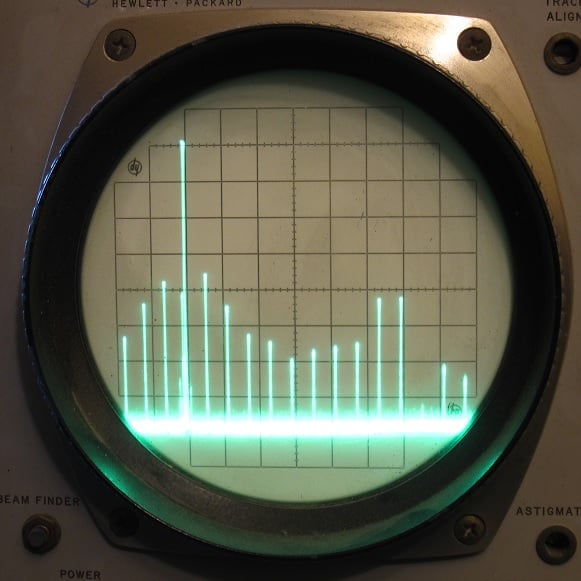This PC is basically my life, I use it for work (freelance business), entertainment, and to self host a server so I’m hesitant. I have a handful of questions for now while I look into it more:
-
I’d prefer not to dual boo, but it might be the safest way to start? If I dual boot, get used to Linux and (hopefully) get everything I need working, can I then go from dual boot to erasing the Windows partition and recombining so I then only have Linux installed and can keep the work and programs I already installed on Linux?
-
I do voiceover work, music production, and digital art/photography. Anyone else here do all this and what programs would you recommened to replace Audition, Photoshop, and Cubase?
–2.1. Regarding music production, has anyone successfully used vst files from Windows on Linux?
-
The drives for my server are NTFS. Does anyone have experience with this format on Linux (I use Emby)?
-
My bread and butter right now is voice acting so I NEED everything to play nice. I’ve read there might be some issues with drivers for my hardware, namely Focusrite Scarlett 4i4 and Behringer UV1. Anyone have any experience with this?
EDIT: Wow that’s a lot of responses. I’d like to respond to each but I’m a bit overwhelmed with all the info haha. I think I’m gonna grab an old external USB drive and live boot from there and test things out. Thanks to everyone, I’ve got a tonne to mull over now. Appreciate it!
I’m going to second the comment to leave well enough alone. Do NOT mess with your machine if its what makes you money.
I know you commented you don’t have funds for a second computer to test with but that really is the best step for you.
This is especially regarding some of your other details. You are not in for a quick and smooth transition (sorry to say).
VSTs are “sort of” supported on Linux. Basically they’re not and there are work arounds that I haven’t done using wine for compatibility.
I run a virtual machine for the windows software I am reliant on. So basically my Photoshop etc I use Affinity in a windows VM and it works fine. Depending if you get intensive with your work you might need a lot of resources or experience lag. But for the most part it should be fine. Look into virt-manager for your VM if you want to go that route.
Besides the VST issue, audio recording will probably give you additiinal problems. I haven’t delved into it because he rabbit hole went too deep for me, but from what I’ve read there tends to be issues with audio in VMs (tremendous lag for one).
But all that being said, there should be a solution for all of your needs. It probably won’t be straight forward though given your use cases. I don’t want to sound negative with my warnings, I just want to make sure you don’t shoot yourself in the foot with your work.
I’m an ex-Windows user and have been using Linux for about 7-ish years now.
If you can handle some downtime, the possibility of some plugins breaking and some time getting used to your new system, you can give it a shot. Otherwise, what I’d more or less recommend is getting a spare computer and just trying Linux out on that. That way you can keep your work computer for critical work while you mess around on the spare.
I checked Cubase on WineHQ, and sadly it won’t run via WINE from what I see, so you will either have to look for a different DAW (which will require extra time re-learning everything) or just going with a spare).
If you do plan on biting the bullet and going full Linux on your work machine, here’s a couple observations:
The only Windows DAW i’ve tried on Linux is FL Studio running through WINE. I do have REAPER for aligning audio tracks (it’s very good at that) but I haven’t really used that enough to become proficient with it. There’s also Bitwig, which I haven’t used (I checked the price on that when i was kinda on the fence about getting it and oh boy is it expensive! around $800 with the annual upgrade or smth lol).
From my experience, VSTs via WINE (in my case, running through FL Studio 24.2.1), is quite good, although there are is a good bit of jank that comes with it (a few 32-bit VSTs don’t work, it’s a bit of a gamble honestly) and there are bound to be a couple potential breakages with WINE updates (like what happened today as I’m writing this, I updated WINE and idk if it’s just a residual thing but the GUIs on GVST plugins don’t render anymore, I can still access the parameters via hovering and looking at the hints panel in FL Studio, but it is a bit cumbersome trying to operate VSTs blindly, especially when they contain things such as waveforms/levels).
Other than that FL Studio’s been running like a charm, very very close to (if not native), except for stuff like the Diagnostic thingy not working at all (told you there’s jank).
As for replacements, you will need to learn new programs, one which may not contain all the features that you would want (muscle memory can also be a bit of a pain). I’d start out with maybe trying out Audacity and GiMP/Krita on Windows and try learning and getting used to the workflow of each on your existing Windows installation before swapping over. I was using FOSS programs like GiMP/Audacity beforehand so the transition was easy once I swapped over. FL in WINE back then was a little more finnicky but most of it still worked so it kept me going.
If you’re still thinking about wiping Windows off of there and going full Linux, good luck, my friend.
Hey just want to say bitwig is on sale atm and costs 299€ from 399€. It’s not 800€. I think I still have an 8 track key I can give some one if they dm me.
lol dual boo
Audition, Photoshop and Cubase you’ll probably have the hardest time to truly replace. Even more if you rely on third party plugins for either of those.
Ok so I’ll just focus on dual booting since there are other thorough replys here.
I really recommend that you DO dual boot but only in a specific way.
When people say “Dual Boot”, this can mean two very different things.
A common way to dual boot is to have windows and Linux exist on the same drive by partitioning the drive and installing a boot manager. I strongly advise against this. It’s not worth the risk and pain.
Just install linux on a totally new drive and select it as the boot drive from bios. Leave you windows drive untouched.
Linux is much better than it ever has been. There is a very good chance it can do everything you want. But, especially as someone running a business, there will be times when you just need to get something done and will want to fall back to what you know. These times often lead to people giving up and rolling back to windows in a panic.
Just leave yourself a way to instantly and effortlessly fall back into windows as needed and eventually you will end up doing that less and less. Until you don’t do it at all and the windows drive gets wiped for more Linux storage.
“This PC is basically my life” screams leave well enough alone. I wouldn’t even set up a dual boot on a machine I depended on to make my living. If you do, make sure you’ve got everything backed up before you start. Nothing should go wrong, but that’s a very different statement than nothing will go wrong.
If you want to start using linux I’d recommend you buy a cheap second computer and start there. You can safely experiment as much as you like without risking your professional set up.
Dual booting on separate drives is safe, especially if you unplug the windows drive while installing Linux so you can’t accidentally mix them up. Just don’t mess with the windows drive from Linux. It’s probably encrypted if you’re running windows 11 anyways.
This seems like a solid take. Never fuck with your bread and butter.
Agreed. A Virtual Machine is also an option. That’s how I got started, running fedora vms on my windows laptop ten+ years ago.
It is an option to play around. But for audio production you really don’t want to be trying to use a VM unless you’re fiddling with USB passthrough (which is a pain). Audio latency on Windows is bad enough, adding Linux’s on top is awful.
There is software for all your uses on linux, but I would start by using those apps on your current setup to get used to the workflow.
Changing from windows to linux can be really tough but it can be made a lot easier if you are already using programs that work on linux before you switch.
👆 This is my advice as well. Switch all your apps to the one that is available on Linux. After you get used to it, then switch the OS. No need to do both at the same time.
+1
I learned Inkscape / Scribus / Krita (which was not easy after 15+ years hooked on Adobe BS) while still on Windoge, had used Linux before so the switch was really painless.
This is the key to a painless transition.
I suggest having two separate hard drives rather than dual booting
Since OP uses it for freelance business, self-hosting and stuff, I recommend even one step further, by a new computer and try to replicate all workflows there. Don’t fuck with the old one until one day OP suddenly noticed that he hasn’t booted his old computer for one year, then he can sell it as parts.
That’s the problem, I’m freelance and barely scraping by haha. I’d love to grab something to try out but it ain’t gonna happen right now. My laptop is a Samsung galaxy book3 ultra which I slapped Mint on a while back and had issues and went back with a cracked windows 11. Apparently linux and the galaxy book line don’t play well. But, I’m very tempted to try another distro on it first, like bazzite. Probably be the smart thing before touching my main PC.
That’s a rather expensive laptop you got there… I personally bought a used Thinkpad x280 for $160, and I run Linux on there. Another option is to get an small computer (sbc) with at least 8 gb of ram, if you already have a monitor.
I don’t have a Behringer UV1 but I do have an UMC404HD and an UMC202HD. Both work flawlessly on Linux out of the box.
I can confirm focusrite scarlet interfaces work fine, and the uv1 should be fine as well but I don’t have one. You may need to get familiar with the Linux audio landscape. VSTs mostly work these days, although I only use foss VSTs so maybe commercial ones have their own caveats.
For pro audio you should be using JACK to connect your sound devices. These days if you run a system that uses pipewire, pipewire can pretend to be a JACK server just fine. I like to use QJackCtl to set up Jack environments, although its not necessary because many DAWs are capable of setting up in the application.
For a DAW I used to love Ardour, now I still like it but am sad that it has been crashing often for me. I don’t use any of them but there are some well liked Linux daws like reaper.
You may have trouble with recording without a preemptable (aka real-time) kernel. Afaict this only matters on lower end computers or when you have a lot of live plugins running, but using a kernel with this feature just means that more kernel code can be interrupted to handle things like fresh audio data arriving over USB.
Mostly, you’ll need some time to get everything working how you want. I agree with the recommendation to use a separate disk in your existing computer for Linux, or get a whole separate computer. The nice thing about using a separate disk is you can know for sure your windows setup is available if needed. For me I slowly left windows behind, only realizing later that it has been a year or more since I last fired it up.
-
There is no shame in dual booting. That will give you the freedom to find alternatives for everything in your workflow until you stop needing to boot into Windows at all. The preferred way is with a separate physical drive, because windows updates will sometimes overwrite the ESP partition or do other weird things which could break your Linux install.
-
Not an expert in that, sorry. There are plenty of articles online for alternatives for all of those.
-
Linux has no trouble reading NTFS. I have an NTFS network drive, and on my dual boot laptop I can simply reach into the NTFS partition on my second drive and grab files from it from Linux (Windows cannot read the Linux drive, though).
-
Not sure on those specific models, but I have a Behringer UM2 and Linux detects and works with it just fine.
-
-
Yup.
-
I use Audacity because it’s super simple and has a familiar interface. Ardour is a DAW with way more features and mixing available, but a lot of people just use ONE as well for the “one and done” method. VSTs are going to be hit or miss depending on what they do and how they were written (many are windows-specific), but there are other things available for replacement if needed. Link.
-
NTFS is fine to read from on Linux, but I wouldn’t suggest read/write because NTFS will 100% corrupt itself over time. Stick to either read-only from NTFS and save elsewhere, or copy them to a new destination and work from there.
-
There’s a lot of info on these on Linux. Sounds like support for the Scarlett hit with kernel 6.8, so you’ll be fine there. The Behringer EV1 should be standalone hardware, meaning it does it’s work with the PC.
You can just run a LiveUSB of Fedora or whatever and try all this stuff out to be sure with no commitment. You could also get a second drive cheap and make this easier to test out fully if you really want and make the switch from dual booting a lot safer.
Either way, you have easy options to test all this out before even installing.
LiveUSB
I had no idea this was a thing! So I can basically put a Linux distibution on a USB, boot into bios and run Linux without installing anything over my existing hdd? Researching a virtual machine has been on my radar, is that basically what this is?
Yeah, download the ISO, use a media writer to put it on any kind of removable media, plug it in, reboot, and you’ll have a fully functional desktop in a few minutes are running in memory. This is the way it should be tested, and it gives you the option to test as many as you want to find the one that fits for you.
The only caveat is that it’s running completely in-memory as I said, so if you plan on testing out installing software to test, keep in mind your usual amount of RAM available will be slightly reduced.
If everything looks great, then you’ll have the ability to install directly, without harming your Windows partition. PLEASE BACK YOUR STUFF UP ANYWAY.
LiveUSB>
I had no idea this was a thing! So I can basically put a Linux distibution on a USB, boot into bios and run Linux without installing anything over my existing hdd? Researching a virtual machine has been on my radar, is that basically what this is?
It’s not a virtual machine. It’s an operating system running directly on your hardware from a drive. The drive just happens to be a USB stick.
I’ll take this space to further the recommendation to get a cheap machine with which to experiment.
It’s what I did for my business. I needed to keep a Windows laptop for client side interactions.
-
I would dual boot first. I’m doing that myself at the moment with Pop OS. I disconnected my existing drives leaving just the drive I’d install Linux to. Ran the installer, then reconnected. I hit f12 at boot to select startup. I did this to avoid dealing with grub or messing with the windows bootloader. I haven’t had good experiences with it in the past.
My biggest problem with trying Linux at the moment is I have a USB audio mixer that Linux refuses to enable. I can tell it sees it, it just won’t list it as a selectable audio device or send audio through to it. So I have no sound.
Actually the safest thing is probably to choose a main system and run the other in a VM like with VirtualBox. For you, you could just install VirtualBox on Windows then Linux inside of a VirtualBox VM. Windows does have a builtin Virtualization solution too you may be able to use, but I have personally never done that. Keep in mind too that VMs are not as performant as bare metal. For video probably NO, for images fine, for audio maybe but you’ll have to see if you get the real-time timing you need in a VM. Good way to play in any case. 2nd best if you have a workstation, not a laptop, you could put in a hot mount SATA drive enclosure, and just swap in the drive you want and get full bear metal performance. Dual boot takes some tech skill. Be sure to back everything up if you do that. Should do that anyway before fiddling. Also if you use bitlocker and secure boot make sure you have all your recovery keys and know how to work with your bios settings too.
Maybe I am missing something, not sure why you care about NTFS. If this is a separate computer you don’t really care about that, just the sharing protocol (SMB for example). If it is on the main box, then you’d probably convert this to Ext4 or something similar. No reason to stick with NTFS with Linux. There are a lot of great FS options on linux plus BTRFS, LVM, or RAID to if you want redundancy.
Regarding apps. The alternativeto site is great. Linux has a bunch of audio and photo software. If your a pro, you may not find any of it sufficient. Especially a lot of people cannot do without Photoshop. The common quoted photo programs are GIMP and Darktable. There are many other photo and image programs. Common audio program is Audacity. Again, there are many others. Looks like some handle vst but I have no personal experience.
-
Definitely dual boot, especially if you’re new to linux, and double-especially if this is what you use for work. You are likely to run into situations where shit just doesn’t work and you need a fallback environment to operate in while you figure out what that’s about and how to fix it. Likewise, you will run into software that runs badly on linux or just doesn’t run at all even under wine/VM, and it will be nice to have that fallback for when you don’t have time to fuck around and figure out what the problem is and need to just get shit done. If things go well you will find very quickly that you don’t need it and can probably go ahead and delete it after a little bit, but at first you want that lifeboat. Mine stuck around for 2 weeks, but I only even used it the first couple days and the rest was ‘maybe I’ll run into some weird situation…’ and just not needing it. As for merging the partitions and such, I believe that’s possible, but you definitely want to make sure you have backups before you try it just in case. There are many good cloud backup services that have linux native clients (I use filen.io myself.)
-
I’ve never even touched music software so I have no idea what’s out there. I do however know about a great website called alternativeto.net that lets you find alternatives to existing software, and you can select your platform to limit it only to linux software. For example, here’s the entry for linux-native replacements for Cubase (it was the obscure one from my perspective, wanted to see if they actually had anything, turns out they do.)
-
Yes, NTFS generally works mostly fine on linux, though there are a couple of weird cases where it causes problems (one I ran into was adding games I had installed on an NTFS drive for windows to Steam on linux, it was very wonky.) After nuking my windows boot drive I went through and copied all the stuff off my NTFS drives and reformatted them to btrfs before putting the data back on them to ensure that everything would work smoothly, but if you’re just using it for regular file access you should be fine. The one caveat I would add is I would probably not recommend editing large projects in files on NTFS drives in linux if you can avoid it, but poke around google and see if you can find people reporting issues with your specific software/use-case to see if there are any problems with it.
-
Drivers for weird hardware are potentially an issue. Looks like there is a FOSS driver for the Scarlett, didn’t see anything at first glance for the Behringer, but also again I have no idea what I’m looking at here so this is something you’re going to have to do some research on. I have had some weirdness with audio in general on linux, things cutting out unexpectedly, stuff like that, but that’s strictly games/discord/that sort of thing, so it might be worth looking for stuff other people have posted about doing heavy audio work on linux to get an idea for what to expect. I’m sure it can be made to work, but it might require more fiddling than you expect.
Either way, welcome to the party. :)
-








